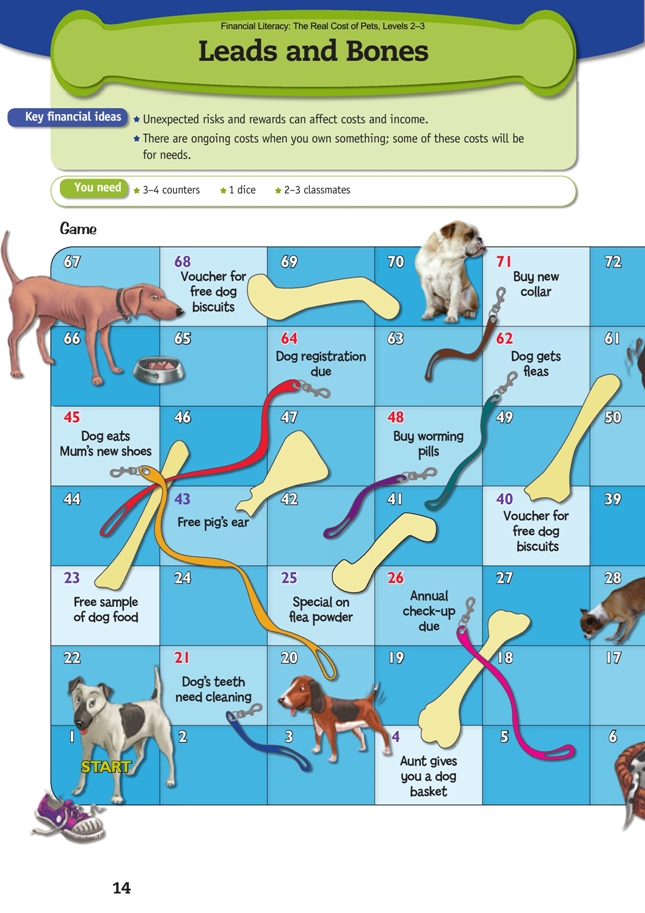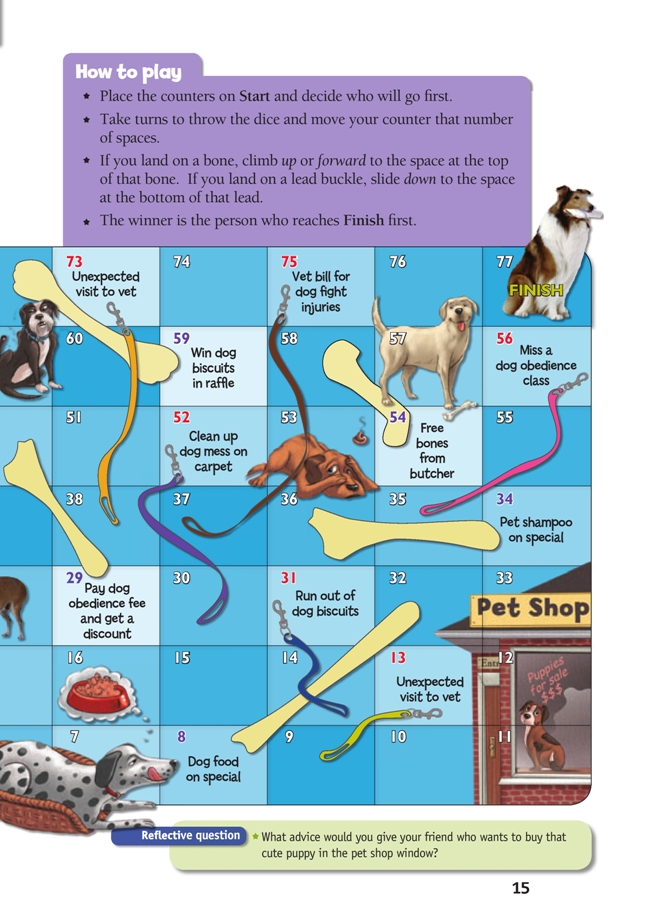This is a level 2 statistics activity from the Figure It Out series.
A PDF of the student activity is included.
Click on the image to enlarge it. Click again to close. Download PDF (6660 KB)
understand probability as it relates to simple dice games.
Game
Financial understanding
All students can participate in this game, regardless of numerical ability. Playing this game helps students to understand that there are unexpected risks and rewards in having a dog and that these affect the cost of owning a dog and the way the income in the household is used.
As the students play this game, encourage them to be fair and responsible. This enterprising attribute will help them to work with and successfully relate to other people in other endeavours. You could go through this game as a class, then send the students off in small groups of three to four to play, followed by a class or group discussion about what they have learnt about the key financial ideas and about their responses to the reflective question.
Later, as a class or in groups, the students could evaluate the Leads and Bones game in terms of fairness, chance of winning, how the game would change if the numbers on the dice were altered, and whether there are the same number of “ups” and “downs”. Ask: Does the number of players change the enjoyment factor of the game? How could you alter the game to make it quicker to finish or harder to complete?
The students could, in pairs, design and make their own game with some financial aspect.
Social Sciences Links
Achievement objectives:
• Understand how time and change affect people’s lives (Social Studies, level 2)
• Understand how people make choices to meet their needs and wants (Social Studies, level 2)
The students could research the needs of children within the school and design a game to meet their particular needs, for example, in the junior school or in the ESOL and second-language learning environment.
Other Cross-curricular Links
English achievement objective:
• Purposes and audiences: Show a developing understanding of how texts are shaped for different purposes and audiences (Listening, Reading, and Reviewing, level 3)
The students could make different rules for an existing board game.
Technology achievement objective:
• Brief development: Describe the nature of an intended outcome, explaining how it addresses the need or opportunity. Describe the key attributes that enable development and evaluation of an outcome (Technological Practice, level 3)
The students could design and make another risks and rewards board game, taking into account robustness of materials, clarity of instructions, and visual attractiveness.
Answers
Game
A game showing that owning a pet is often more expensive than it first seems and that you can’t always predict all your costs.
Reflective question
Answers will vary but should include the need to find out about set-up and ongoing costs and whether your friend can actually afford those costs after they have paid for the puppy. You might want to remind them that cute puppies can grow to be big dogs!

